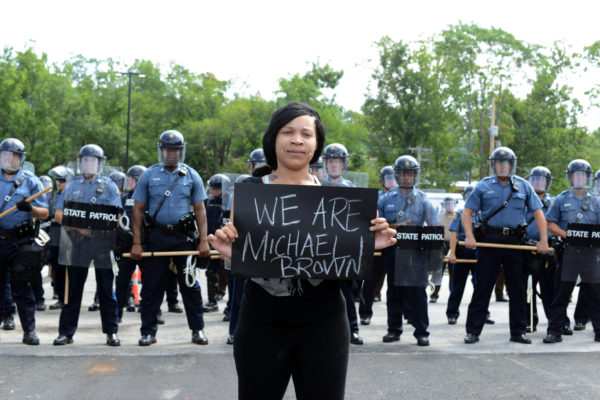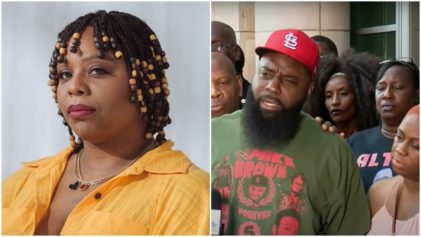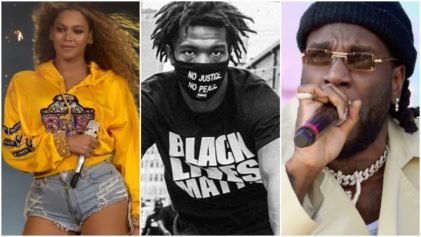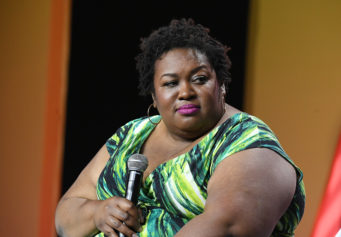Negative stereotypes and portrayals in the news media could be influencing how police treat African-American men, a Rutgers School of Public Health study suggests.
The report, published in the book “Research in Race and Ethnic Relations” in late November, examines how public perceptions of the danger posed by Black men are contributing factors in how officers respond with excessive and/or lethal force, according to Phys.org. The study also noted how Black masculinity is often equated with criminality, machismo, and hyper- sexuality.

The study noted how media coverage of the Michael Brown shooting depicted the 18-year-old as overly aggressive and a “monster.” (Getty Images)
“Unarmed Black Americans are five times more likely to be shot and killed by police than unarmed white Americans,” said professor Pamela Valera, a lead author of the study. “We believe that media may play a significant role in these disproportionate deaths.”
She added: “The stereotypes held, consciously or unconsciously, about the criminality and ‘dangerousness’ of Black men influence the rates at which they are stopped and engaged by the police.”
As part of their study, researchers reviewed three iconic newspapers’ coverage of the fatal shooting of 18-year-old Michael Brown by white Ferguson, Mo., police officer Darren Wilson in 2014. Researchers chose The New York Times, The Washington Post and the Los Angeles Times for their ability to impact public opinion, the report stated.
According to Rutgers, “The research analyzed how the race, physicality and masculinity of Brown and Wilson were presented in media coverage of Brown’s death and Wilson’s testimony. The researchers analyzed 40 articles from the three newspapers, taking into account which voices were given space in each article. On subsequent readings, a codebook was developed containing codes that capture the masculinity, physicality, class and race of Brown and Wilson. It concluded that negative race-based perceptions perpetuated by the media may have contributed to Brown’s death.”
Researchers also paid particular attention to how the newspapers used Wilson’s account of the shooting to describe Brown, as well as the verbiage used to depict Brown and Wilson’s socioeconomic status. For instance, one account, citing Wilson, painted the Black teen as a “monster” and noted how the officer compared himself holding onto Brown’s arms to “a 5-year-old trying to hold on to Hulk Hogan.”
On another occasion, Brown’s neighborhood was depicted as “trappings of a working-class haven” with an “edge of frustration and anger,” while Wilson was painted as someone who had overcome a difficult childhood to make a life a in middle-class suburban neighborhood with pretty “brick ranch-style homes” and “manicured lawns.”
“Newspapers use sensational words to get hits,” Valera explained. “However, the words they used depicted Brown as a monster.”
Valera called the study’s findings a “snapshot” of a larger, ongoing issue of police aggression toward Black men based on racist stereotypes and portrayals presented in the media.
“Since the perceptions that Wilson held of Brown are indicative of more general attitudes of black men, it is vital that police be engaged in more intensive training to become aware of the stereotypes and implicit biases they hold, especially regarding the communities with which they have constant contact,” she said.


